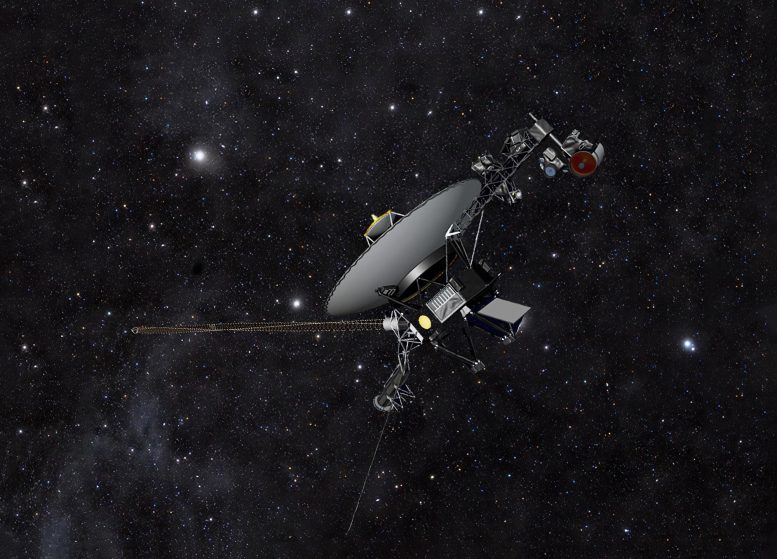
Launched in 1977, NASA’s Voyager 1 and Voyager 2 spacecraft were designed to explore Jupiter and Saturn, providing groundbreaking data on the planets, their rings, and major moons.
On September 5, 1977, NASA’s Voyager 1 spacecraft lifted off atop its Titan/Centaur-6 launch vehicle from Launch Complex 41 at Cape Canaveral Air Force Station, now Cape Canaveral Space Force Station, in Florida.
Voyager 1 and its twin, Voyager 2, were originally launched to conduct closeup studies of Jupiter and Saturn, Saturn’s rings, and the larger moons of the two planets. After completing these missions and more, Voyager 1 became the first spacecraft to reach interstellar space and is now the farthest human-made object from Earth. Scientists think it will reach the inner edge of the Oort Cloud in 300 years.
Follow along with Voyager’s live mission status.

The Voyager missions, launched by NASA in 1977, consist of two spacecraft: Voyager 1 and Voyager 2. These missions were initially intended to study the outer planets of our Solar System, particularly the gas giants Jupiter and Saturn. Both probes provided unprecedented observations and data on these planets, their major moons, and their ring systems.
Voyager 2, in an extended mission, continued on to Uranus and Neptune, becoming the first (and, to date, the only) spacecraft to visit these outer planets. Both Voyager 1 and 2 are equipped with the “Golden Records,” which carry sounds and images selected to portray the diversity of life on Earth for any extraterrestrial beings that might encounter the probes.
Following their planetary missions, both spacecraft have continued to journey outward, sending back data from the far reaches of our Solar System. As of September 5, 2023, Voyager 1, the most distant human-made object from Earth, is 14.97 million miles away, and Voyager 2 is 12.44 million miles away.
The Voyager missions have significantly expanded our understanding of the Solar System and continue to send back data, providing insights into the space environment outside of our planet’s protective bubble.
Never miss a breakthrough: Join the SciTechDaily newsletter.
1 Comment
The distances from earth are incorrect. I think the distances are in billions of miles, not millions